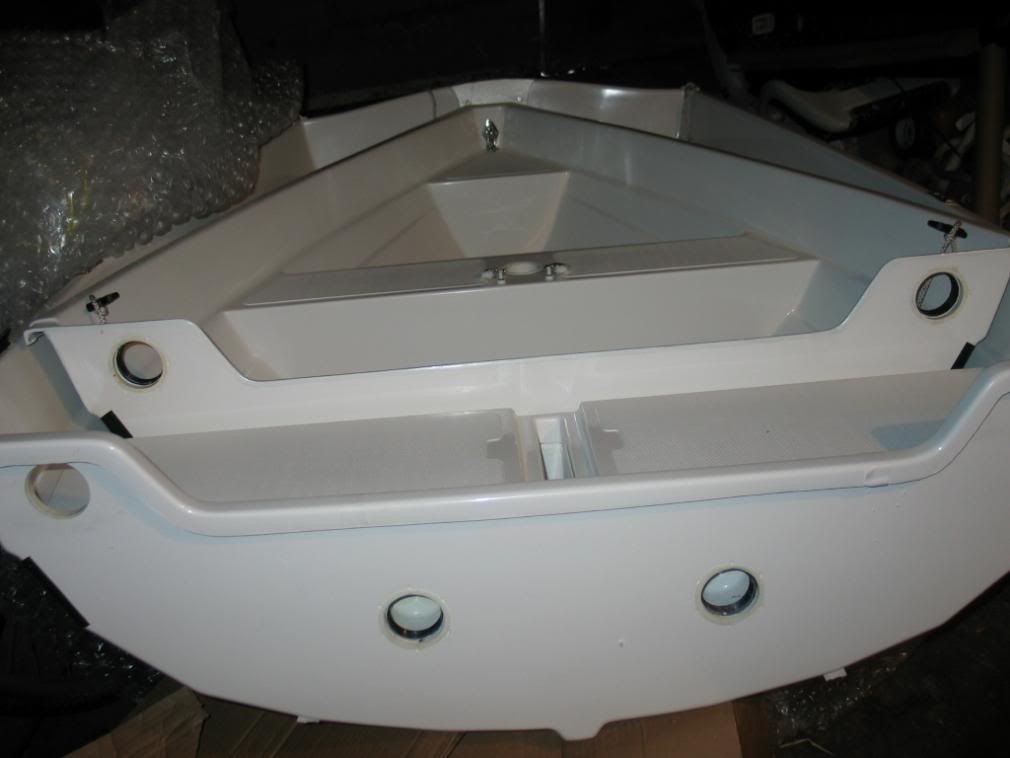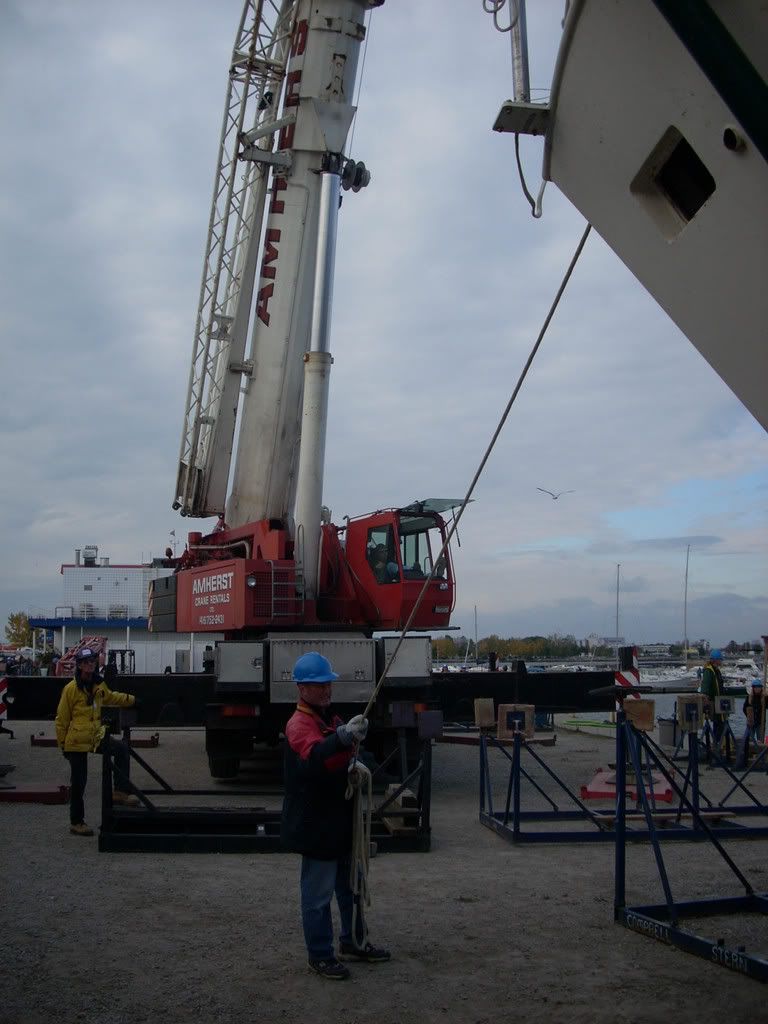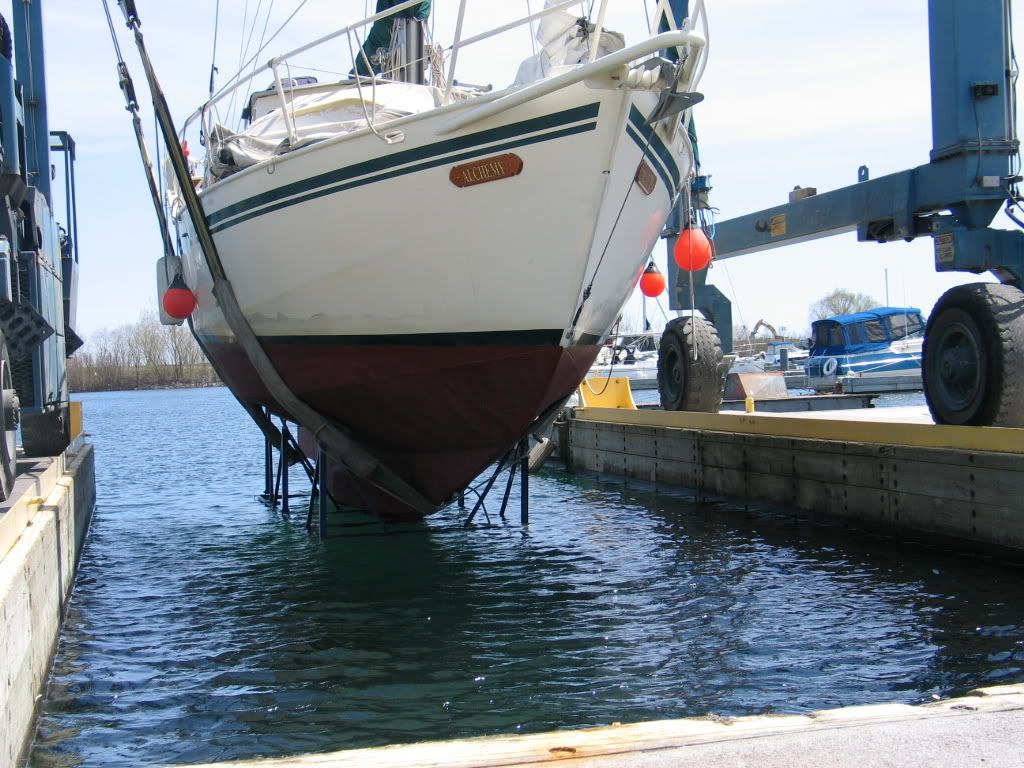I recently had an opportunity to crew on a short delivery from one part of Portugal to another. As I was completely lacking in salt-water sailing experience, and as the brevity of the trip fit into my schedule, I went to Portugal to get on a custom 12 metre (40 foot) racing sled...only to find less wind than on a typical Lake Ontario summer day.

This is offshore from Cascais,
Giulietta's home port, looking east "up" the river to show the nearly continuous development of the coastline from Cascais to Estoril to Lisbon. Alex, the skipper, kept saying that Portugal was a poor country, but it's hard to tell looking at this stretch of coastline. You can just make out that all those beaches are blanketed with large-breasted young women eager for "English lessons".

Alex is a man of contrasts. These shrouds are possibly thicker than the 5/16th 1 x19 ones on my steel cutter, but his backstay is a 1/4" of Dyneema. Alex should buy shares in the company that makes the stuff.
Note the prebend: it didn't really come into play on this light-air sail day.

Everyone works on
Giulietta, especially the children. Here we see the nine-year-old Fred, Alex's Optimist-sailing son, putting in a reef line that, in the nature of things, turned out to be utterly unnecessary. Note that Alex is not only a fine engineer, but a handy stepladder.

This is fairly typical of the Portuguese coastline: high, vertical and twisted by glaciers and seabed uplift. We passed this cape (which begins with "E" but I can't remember the name) and the more famous Cabo Sao Vincente/Cape St. Vincent, scene of a Napoleonic sea battle second only to Trafalgar. These would not be friendly waters to a ship-rigged man of war: the whole coast is rocky, subject to currents and usually a lee shore. Alex commented on how unusual it was to have such benign weather...and by "commented" I mean muttered curses in fast Portuguese and tiny tweakings of obscure sail control lines, of which there appear to be 20 or 30 on his boat.

This is Sines, our first overnight stop, or "nap", considering how we worked until 1:30 AM and left at 5:30 AM. It's a traditional fishing village (with a huge set of refineries nearby!) built into the side of the cliffs with a big and clean marina in the harbour. Vasco da Gama was born here, and a few days later I touched his sepulchre for sailors' luck in the chapel of Geronimos in Belem.
I recommend the restaurant we found, and can confirm that Alex can demolish a half kilo of barnacles in ten minutes and still promote the virtues of Portugal without chipping a tooth.

A grainy but representative shot of
Giulietta by night at Sines. This is when we all thought we were going to bed. Little did we know that Alex's concern for his wife's night vision meant we were going to help him install spreader lights for the next 90 minutes. Any man willing to cut off the circulation to his legs and genitals to bring light to his wife is very much in love, I think.

The
other Alex, aka "Lead Head", here shows that while the typical Portuguese crew has little use for PFDs and harnesses and other wimpy North American affectations, nothing is more important underway than good grooming and a fetching pair of clown pants.

This is the former "end of the world": Sagres, where Henry the Navigator planted the seeds for a brief but memorable phase of Portuguese world domination. This place is so critical to the Portuguese psyche that they named their best beer after it. Alex promised us "a washing machine" of rough seas here, but to his infinite disgust it was more like ginger ale bubbles. We did touch 20 knots of wind briefly, and the swells were three metres here. That got the kinks out of my back.
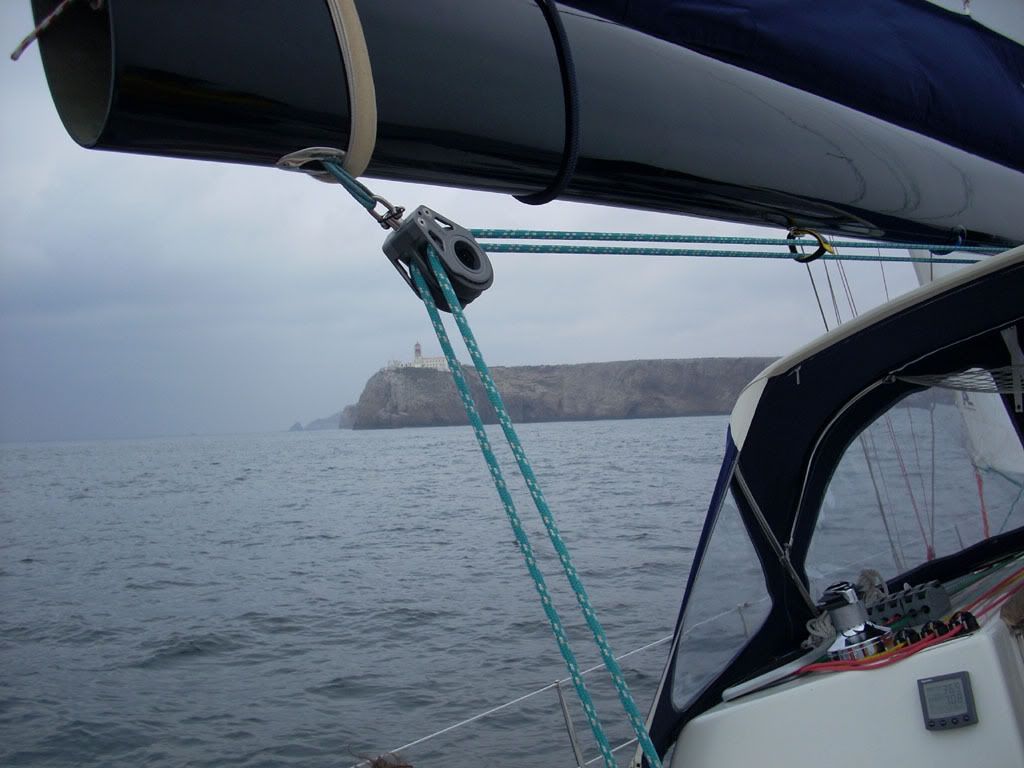
A fleeting episode of real, engine-off sailing occured south of Sagres. We finally got the foredeck wet and hit 11 knots of boat speed, but it didn't last long and Alex ended up using a fair bit of the excess diesel the dock guy put into his tanks at Cascais (pronounced "Cash-ki-eesh" with a very long "i", by the way..Portuguese vowel sounds are tricky!).

Vilamoura Marina: 1,000 boats and dozens of hotels and hundreds of luxury condos. It's a hard life, but someone has to live it. Tom, an American who also decided that hooking up as crew with Internet acquaintances wasn't completely insane, and I wore out a lot of shoe leather around here walking from the town up and to the east down into this swanky place. For a sailing man, he's got beautiful legs.
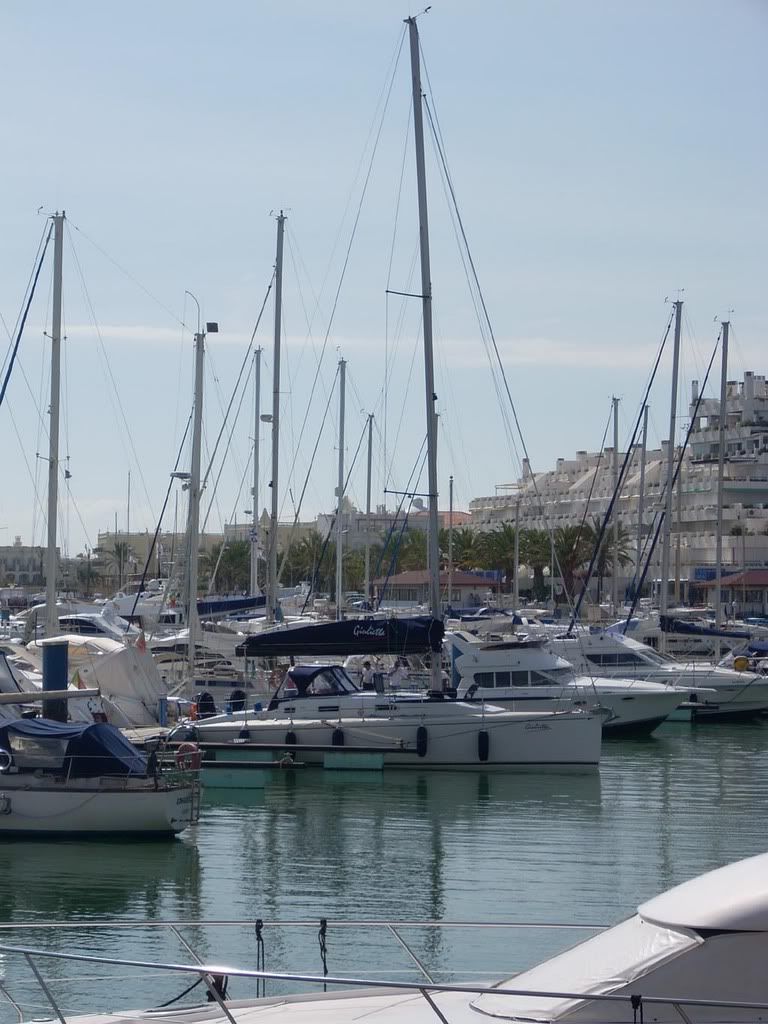 Giulietta
Giulietta's summer dock. Note the comparative shortness. I think the Portuguese consider long docks somewhat unmanly, because they don't allow strangers to properly admire one's polished bows. Alex got a double slip to himself, because the original assignment was 10 cm. narrower than his beam, or so it seemed to me, acting as a human fender. Anyway, it's a sweet place to hang out in the summer and is surrounded by restaurants and good looking people with nice manners.

